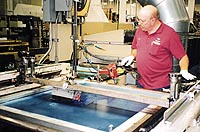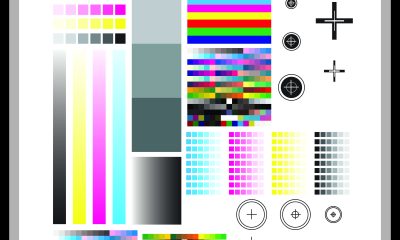News & Trends
Where Are You Coming From?
Published
12 years agoon

One of my favorite places to go for new ideas and perspectives is TED.com. TED talks are addictive, 18-minute-long presentations by the world’s foremost thought leaders in all areas. There are over 1000 TED talks available, all free to watch. Of all the talks, my favorite is by Simon Sinek on “How Great Leaders Inspire Action.” I have watched this particular presentation at least 30 times, and each time I watch it, I find more.
One of my favorite places to go for new ideas and perspectives is TED.com. TED talks are addictive, 18-minute-long presentations by the world’s foremost thought leaders in all areas. There are over 1000 TED talks available, all free to watch. Of all the talks, my favorite is by Simon Sinek on “How Great Leaders Inspire Action.” I have watched this particular presentation at least 30 times, and each time I watch it, I find more.
The underlying concept is so inspiring. Sinek talks about the way businesses see themselves and talk about themselves. They tell the world about what they do and how they do it. We’re conditioned to it. Think about it. When you meet someone for the first time, after you are introduced, the first thing you’re asked is, “What do you do?”
He goes on to explain that the what and how are logical concepts, processed by the neocortex—the modern, logical part of our brain. It only makes up 10% of our active brain processing. This is the specification-driven processor we are all so familiar with. Unfortunately, specifications are easily substituted with less-expensive alternatives that still satisfy the requirements. This is the trap we fall into when positioning ourselves with a what and how model.
The other 90% of mental activity takes place in the limbic mind—the lizard brain. This is the ancient part of our brain that processes and controls everything about how our bodies and subconscious work. It cannot communicate directly with us, but modern neuroscience has determined it records and stores everything in our lives from the minute we are born. This is the part of the brain that leads to feelings and intuition.
AdvertisementIntuition is that gut feeling that something just doesn’t feel right about a deal. You can’t explain it, but the more experienced you become, the more you trust your intuition. That’s because your intuition is sending you a message, via a feeling, that is based on countless experiences, sensations, and cues. These are largely subconscious, and we are most often unaware of them happening.
So what does all this have to do with you? The limbic brain controls the why part of our existence. Why is about the passion of what we do. Sinek elaborates: “People don’t buy what you do; they buy why you do it.”
The most famous and relevant commercial example is Apple Computer. Using this approach, they have redefined the way we do business with them and, in the process, have become the highest valued company in the world. They have the highest brand loyalty and highest profit margins of any company. Their retail stores have a higher ROI per square foot than any other retail store, including companies like Tiffany & Co. or Cartier. They lead every performance index that is measured. But that’s not all.
What really got me excited about this concept was that what you make and how you do it can change. The why does not. As long as you are clear on why you’re in business and what your core values really are, you can easily adapt to new products, markets, and services.
This is incredibly important as we morph our way into the new digital economy. Apple started off making computers, but now that part of the company’s business is a small proportion of its total revenue. Today, Apple makes computers, iPads, iPhones, iPods, iTunes, iCloud, and a host of other services, software programs, and hardware. Steve Jobs was absolutely driven, and brilliant, in his use of why.
So far, I have been able to identify nine different whys. You can be motivated by more than one, but most people will easily identify with a primary motivator. Here is the short list of the nine:
Advertisement1. To do it the right way. No shortcuts. Follow a path of successful outcome. This is often about being driven by the concept of mastery at what you choose to do. It is often frustrating because those around you do not share that same appreciation. They just don’t get it.
2. To find a better way and share it. There is always room for improvement and there are always options to make any given situation better. This is the basis for continuous improvement.
3. To simplify. This is about making the complex as simple as possible. It is about making it as easy as possible to do business with you or to use your website.
4. To create clarity for the benefit of others. This is about creating an environment where everyone is understood and the full picture is seen by all. This has special meaning for those of us in the communication business.
5. To make sense of a complex situation. Similar to creating clarity, this why is about sorting out and clarifying what is happening on many different levels. It is about understanding multiple perspectives and how they relate to each other and to the perspectives of others. This is a common trait of good negotiators or salesmen.
6. To create relationships based on trust. These are professional, client-based relationships. This is where most of us aspire to have our businesses represented. Here, customers become clients, putting their trust and loyalty into our professional guidance.
Advertisement7. To help others to contribute to a greater good or cause. This is largely focused on community and nonprofits, but it doesn’t have to be. This is about seeking and finding new, innovative, and unique solutions to problems facing those in a given area.
8. To seek knowledge and understanding. This is a big one and the subject of several columns I’ve already written. We live in a world driven by the exponential expansion of data and information. How we assemble these data and information represents knowledge. The challenge is to discover new knowledge and integrate it into our lives to make our life better and to grow our business.
9. To challenge the status quo. This is what drives Apple. It started with the famous 1984 Macintosh commercial that changed the way we think about computers—but only ran one time. Upon Jobs’ return in 1997, the Think Different campaign challenged the way innovators see the world. These are the disruptors. These are the rebels who do not want to conform to someone else’s rules or ideas. The analog world was largely mass conformity. The digital economy is about the individual and mass customization.
Think about your own business or job. Why do you do what you do? It really isn’t about the paycheck or the profit. Those are a means to an end. What really gives you satisfaction in what you do? Why do you strive to do what you do? You can ask this of yourself and the business.
When you ask these questions, you start to focus in on the big why that underlies your ultimate purpose. These are the things that matter and they are the things that do not change. Most often the why of the business is also the why of the owner or leader.
As Sinek says, “People don’t buy what you do, they buy why you do it.” The key to this enlightening statement is, people who align with what drives you will buy because they value you for who you are. This was a huge breakthrough for me. For the first time, I began to understand why some clients were a delight to work with and others were a nightmare. When I looked closely at each relationship, I discovered that the good ones aligned with me, and the difficult ones did not.
Does that mean we need to fire all of our difficult customers? Of course not. It means we have the opportunity to reframe what we do based on what drives them relative to what drives us. We need to put our why into a perspective they can understand. Look at the list above and you will quickly realize it is not only entirely possible to bridge between each of those drivers, but they are all compatible with each other.
You will also find difficult relationships often occur because the other party is unclear about who they are. Think about all those customers who have struggled with getting their art just right. The famous line, “I don’t know what I want, but that’s not it.” is a perfect example of being lost and frustrated at your expense.
Our world is becoming increasingly complex. Values, institutions, and processes are all being disrupted. We question everything. What worked in the past is increasingly challenged and may no longer be relevant to the conditions today. This leads to confusion and, ultimately, the breakdown of our systems. Chaos follows. Making any kind of sense of the constantly changing world around us requires the use of tools like these to remind us of who we really are and why we do the things we do.
Remember, the why never changes. It’s our responsibility to create new products and services in alignment with who we really are and with what the market wants. The core is constant in our professional and private lives. I invite you to begin your own journey of discovery of who you really are and to put into perspective the changes you’re dealing with as your markets and customers become more demanding. Learn to ask the questions that will identify the clients who align with you and can value what you bring to them.

SPONSORED VIDEO
Let’s Talk About It
Creating a More Diverse and Inclusive Screen Printing Industry
LET’S TALK About It: Part 3 discusses how four screen printers have employed people with disabilities, why you should consider doing the same, the resources that are available, and more. Watch the live webinar, held August 16, moderated by Adrienne Palmer, editor-in-chief, Screen Printing magazine, with panelists Ali Banholzer, Amber Massey, Ryan Moor, and Jed Seifert. The multi-part series is hosted exclusively by ROQ.US and U.N.I.T.E Together. Let’s Talk About It: Part 1 focused on Black, female screen printers and can be watched here; Part 2 focused on the LGBTQ+ community and can be watched here.
You may like
Advertisement

The Profit Impact of a Market Dominating Position

Inkcups Announces New CEO and Leadership Restructure

Hope Harbor to Receive Donation from BlueCotton’s 2024 Mary Ruth King Award Recipient
Advertisement
Subscribe

Bulletins
Get the most important news and business ideas from Screen Printing magazine's news bulletin.
Advertisement
Most Popular
-

 Case Studies2 months ago
Case Studies2 months agoHigh-Density Inks Help Specialty Printing Take Center Stage
-

 Art, Ad, or Alchemy2 months ago
Art, Ad, or Alchemy2 months agoF&I Printing Is Everywhere!
-

 Andy MacDougall2 months ago
Andy MacDougall2 months agoFunctional and Industrial Printing is EVERYWHERE!
-

 Columns3 weeks ago
Columns3 weeks ago8 Marketing Mistakes Not to Make When Promoting Your Screen Printing Services Online
-

 Editor's Note3 weeks ago
Editor's Note3 weeks agoLivin’ the High Life
-

 Marshall Atkinson3 weeks ago
Marshall Atkinson3 weeks agoHow to Create a Winning Culture in Your Screen-Printing Business
-

 Thomas Trimingham2 months ago
Thomas Trimingham2 months ago“Magic” Marketing for Screen Printing Shops
-

 News & Trends2 months ago
News & Trends2 months agoWhat Are ZALPHAS and How Can You Serve Them in Your Print Business?












